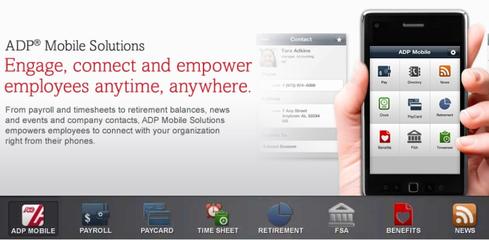ADP adds compensation management to its cloud-based Workforce Now app for midsized firms. Are pay-for-performance cultures crucial as Baby Boomers retire?

There's a war on for talent, and with 18% of the US workforce set to retire within the next five years, payroll giant ADP says it's imperative for midsized firms to create pay-for-performance cultures that promote employee engagement.
"Recruiting and developing employees is harder for midsized firms because they are competing with much larger companies that have more resources," said Jessica Saperstein, ADP's VP of strategy and business development, in a phone interview with InformationWeek. "Once midsized firms have hired the talent they need, they have to have a strong retention strategy to engage and reward the top performers."
ADP announced Tuesday that it's helping firms with 50 to 1,000 employees create pay-for-performance cultures by adding a Compensation module to its cloud-based Workforce Now human capital management (HCM) application. The Compensation module, which automates compensation planning and helps firms link employee performance to employer-defined guidelines and budget thresholds, is a component of ADP's cloud-based Vantage HCM application for enterprises with more than 1,000 employees.
[Want more on Oracle HR apps? Read Ellison's Oracle HCM Chat Turns To Rivals, Hawaii.]
Tech giants including IBM, Oracle, and SAP have joined the cloud-based HCM market in recent years through their acquisitions of Kenexa, Taleo, and SuccessFactors, respectively. ADP, meanwhile, is an established leader, with more than 620,000 cloud customers of its cloud-based RUN (small business), Workforce Now (midsized business), Vantage (enterprise), and GlobalView (multinational) HCM applications.
In other Workforce Now upgrades announced Tuesday, ADP has stepped up support for global business operations with an HR System of Record that now supports 33 countries with multilingual and multicurrency capabilities. Analytics improvements include built-in metrics for HR, time, payroll, and talent retention with the ability to add customized key performance indicators (KPIs).
Addressing compliance concerns, the Workforce Now Benefits Administration system now includes an ACA Compliance Dashboard designed to help midsized companies stay compliant with provisions of the US Affordable Care Act.
ADP recently stepped up mobile HCM capabilities with the April 7 release of a new tablet-based app that works with RUN, Workforce Now, and Vantage HCM. The company has had a smartphone app for more than two years, but it's aimed primarily at employees, whereas the tablet app adds features for managers.
The smartphone and tablet apps both enable employees to view pay and tax statements, clock in and clock out, adjust time sheets, request time off, view benefits and retirement plans, and review company news and calendars. The tablet app lets managers view team member profiles and time sheets, update and fix time sheets, review and approve (or deny) personal time-off requests, and review team schedules to ensure adequate coverage. ADP says it plans to add tablet functionality including the ability to edit and update employee profiles, add performance notes for employee discussions and performance reviews, manage job searches, and search and apply for open positions.
The tablet app includes native iOS and soon-to-be-released Android versions. The HTML5-based tablet app is smartphone compatible will eventually replace ADP's current mobile app once all features and functions are proven on tablets. More than 60,000 ADP customers (and more than 2.3 million employees) are making use of the current smartphone app, according to the company.
Mobile, cloud, and BYOD blur the lines between work and home, forcing IT to envision a new identity and access management strategy. Also in the The Future Of Identity issue of InformationWeek: Threats to smart grids are far worse than generally believed, but tools and resources are available to protect them. (Free registration required.)
About the Author(s)
You May Also Like







